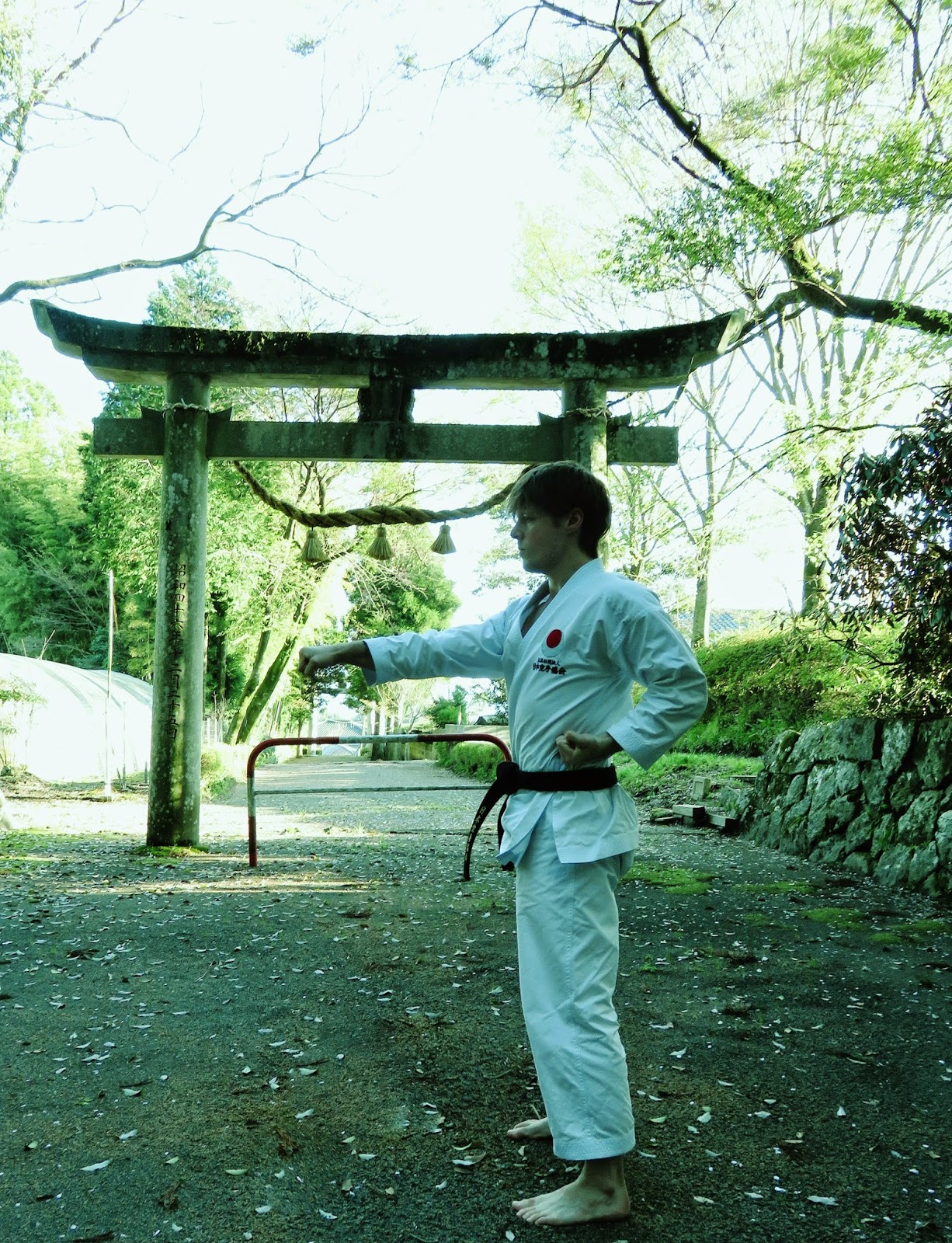 |
| Christa after a lesson at my private dojo. |
Christa has trained with me at my full time dojo in New Zealand around 10 years ago, also when I lived in Oita-ken in 2008 (click here: http://andrebertel.blogspot.jp/2008/07/christa-visits-japan.html), and at some of the international seminars I’ve taught (twice in New Zealand; twice in Northern Germany; and once in England).
In 2005 she
competed in the New Zealand Karate-Do Championships as a member of my dojo (the
Christchurch Traditional Karate Team). At that tournament she placed in the
women’s individual individual kumite. In 2011, she won a world kobudo
championship title in Okinawa. Away from karate, Christa even attended Mizuho
and my wedding in 2006!
What is so
great about Christa, besides being a great person, is that she doesn’t practice
budo for competition; rather, she is seeking the tradition of Japanese martial
arts and simply focuses on “improving herself through culminated practice”. Moreover,
she is willing to go out of her way to access top-level traditional training. This,
to me, sums up the essence of karate-do training and budo in general.
Training: Our training focused on the contrast
between linear and circular techniques at an extreme, and `winding up’
(essentially `tai no shinshuku’) without any unnecessary action(s). This also
included basic stepping in both zenkutsu-dachi and kokutsu-dachi; however, I
primarily had Christa focus on choku-zuki, gyaku-zuki and shuto-uke. We then
moved on to Unsu kata, which I broken down into very small sections: to further
practice the aforementioned focal points. We also practiced important oyo
(applications) from Unsu, Enpi and Gankaku.
It was great
seeing Christa’s movement really improve via the moderation of her koshi no
kaiten (hip rotation) and cutting superfluous extra hand/arm movements out of
her kata. The result was a much more strong, balanced, and `Japanese style’
kata. In particular, her improvement in the final sequence of Enpi was nice to
see. By and large, kata performed in this way generates optimal movement for
goshin-jutsu (self-defence). This vividly reflects the maximum that kihon, kata
and kumite are one: the “trinity of karate-do”.
Christa’s also trained
with Nakamura Shihan and Nakamura Sensei in Kumamoto City. I’d like to end by
saying that it was an honour for me that Christa came to visit and train here
in Aso-shi. Domo arigato gozaimashita Christa. Safe travels!!! Osu, André.
 |
| Training at JKA Kumamoto. Nakamura Sensei on the far right (standing). A great person and his class is always fantastic! |
© André Bertel.
Aso-shi, Kumamoto. Japan (2014).













..JPG)




.jpg)
.jpg)


